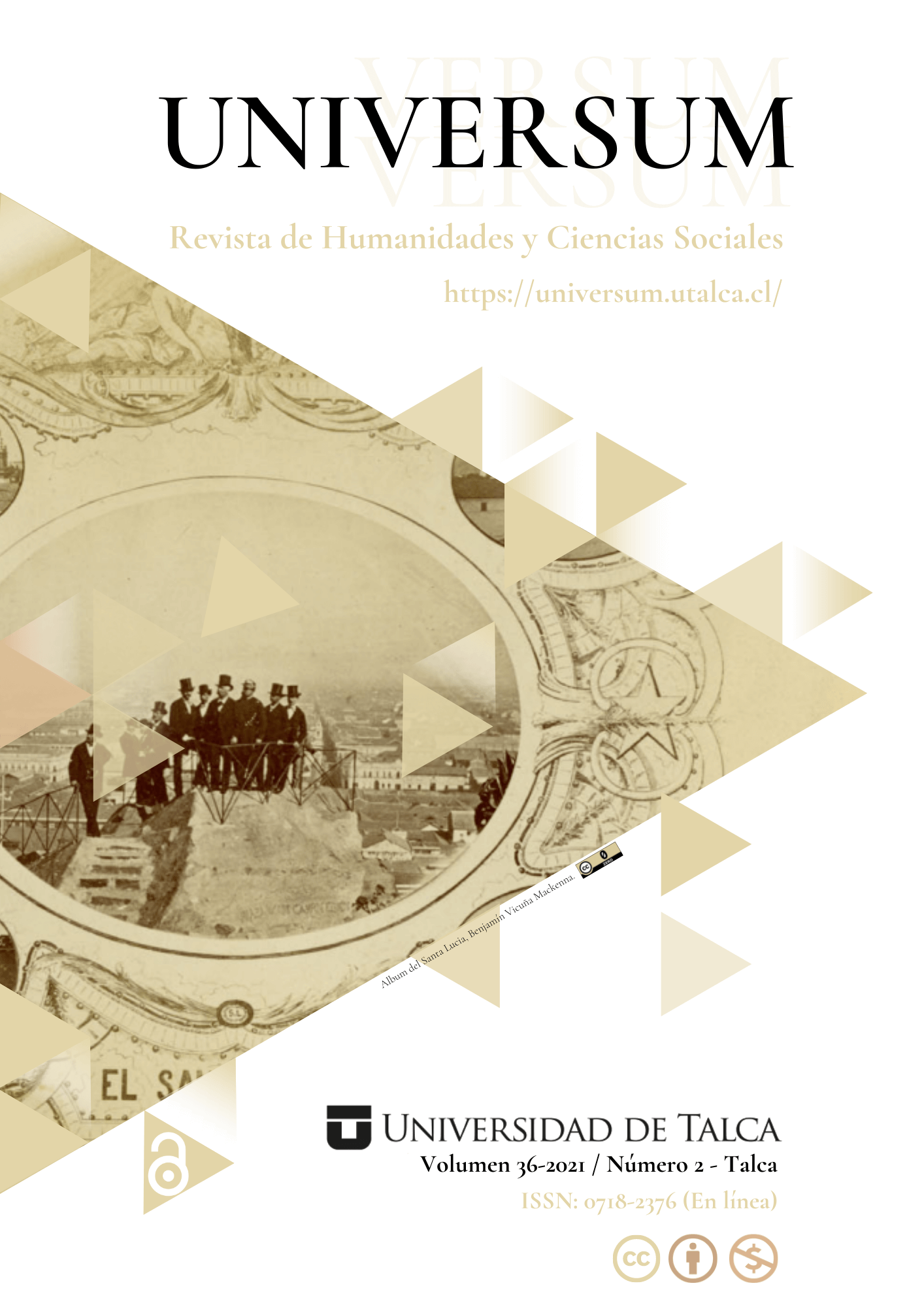Abstract
In the first decades of the twentieth century, when first-wave feminism was confronted by medical discourses that tended to display the supposed natural inferiority of the woman, psychoanalysis appeared as a science and practice which, together with seeking to make women speak through therapy, was also prone to placing them in the realm of the enigma and the indecipherable. Seemingly, many women writers would have attempted to unveil the secret of femininity by narrating the private lives of their protagonists. However, we can observe instead a kind of resistance to being analyzed based on the codes of science and classical myths, and offering in place of that a challenge to the very question of the secret of the woman. In particular, I propose reading “Las islas nuevas” by María Luisa Bombal as a text that enters into argument with the alleged interest of men in examining women, questioning the interpretation that they offer, their supposed desire to listen, the place of analysis in which women are poised, and the pretension of giving a solution to a question that is itself questionable.
References
Araya, C. (2010). “Mujeres, médicos y enfermedad mental en la segunda mitad del siglo XIX”. Historia de las mujeres en Chile. Stuven, Ana María y Fermandois, Joaquín (editores). Santiago: Taurus, 427-454.
Bombal, M. L. (2018). “Las islas nuevas”. Obras Completas (Compiladora: Lucía Guerra). Santiago: Editorial Zigzag, 147-167.
Bianchi, S. (1997). “María Luisa Bombal o una difícil travesía (del amor mediocre al amor pasión)”. Cyberhumanitatis 2. Sitio web: https://cyberhumanitatis.uchile.cl/index.php/RCH/article/view/27833/29500
Bertin, C. (2013) Marie Bonaparte discípula de Freud que exploró la sexualidad femenina. Barcelona: Tusquets, 263.
Derrida, J. y Ferraris, M. (2007). El gusto del secreto (1997). Buenos Aires – Madrid: Amorrortu.
Derrida, J. (1998). Resistencias del psicoanálisis (1996). Barcelona: Paidós.
Ewart, G. (2018). “Retratos: María Luisa Bombal” (1962). Obras Completas (Compiladora: Lucía Guerra). Santiago: Editorial Zigzag, 332-346.
Felman, S. (1993). What does a woman want? Reading and sexual difference. Baltimore and London: The Johns Hopkins University Press.
Freud, S. (1979). La interpretación de los sueños (1899). Buenos Aires: Amorrortu, vol. 4 y 5.
Freud, S. (1979). “La feminidad” (1932). Buenos Aires: Amorrortu, vol. 22.
Freud, S. (1979). “Sobre la sexualidad femenina” (1931). Buenos Aires: Amorrortu, vol. 21.
Freud, S. (1979). “Lo ominoso” (1919). Buenos Aires: Amorrortu, vol. 17.
Kofman, S. (1997). El enigma de la mujer. ¿Con Freud o contra Freud? (1980). Madrid: Gedisa.
Gálvez, G. (2018). “Entrevista con María Luisa Bombal” (1979). Obras Completas (Compiladora: Lucía Guerra). Santiago: Editorial Zigzag, 374-379.
Garrels, E. (1991). “Ver y ser vista: La mirada fálica en La última niebla”. Escritura: Revista de Teoría y Crítica Literarias 16, 31/32, 81-90.
Guerra-Cunningam, L. (1980). La narrativa de María Luisa Bombal: una visión de la existencia femenina. Madrid: Playor.
Guerra-Cunningham, L. (2018). “Testimonio autobiográfico”. Obras Completas (Compiladora: Lucía Guerra). Santiago: Editorial Zigzag, 273-290.
Irigaray, L. (2007). Espéculo de la otra mujer (1974). Madrid: Akal.
Moi, T. (1988). Teoría literaria feminista. Madrid: Cátedra.
Mora, G. (1985). “Rechazo del mito en ‘Las islas nuevas’ de María Luisa Bombal”. Revista Iberoamericana 132-133 (Vol LI), Julio-Diciembre, 853-865
Münnich, S. (2007). “El enigma del muñón en Las islas nuevas”. Casa de hacienda / Carpa de circo. Santiago: LOM, 69-80.
Román, N. (2012). “El deseo, el cuerpo y el secreto como formas de subjetivación en María Luisa Bombal”. Aisthesis 51, Julio, 171-184.
Ruperthut, M. (2013). Freud y los chilenos: Historia de la recepción del psicoanálisis en Chile (1910-1949). Tesis para optar al grado de Doctor en Psicología. Universidad de Chile.
Showalter, E. (1987). The Female Malady. Women, madness and English Culture (1830-1980). London: Virago Press.
Urzúa, N. (1908). “La mujer”. La Palanca / órgano de la Asociación de Costureras. Santiago: Aurora, Año I, N°4, agosto, 40-41.
Veneros, D. (1995). “Consideraciones médicas decimonónicas en torno a género, salud y educación”. Dimensión histórica de Chile 10, 135-53.
Vidal, H. y de Gibert, C. (1976). María Luisa Bombal: la feminidad enajenada. Gerona: Cea.
Woolf, V. (2006). Un cuarto propio (1929). Santiago: Editorial Cuarto Propio.

This work is licensed under a Creative Commons Attribution-NonCommercial 4.0 International License.


